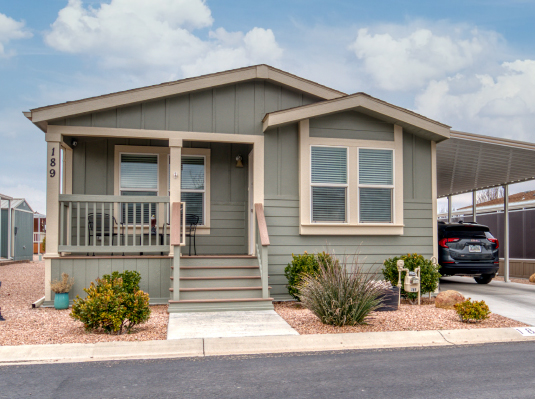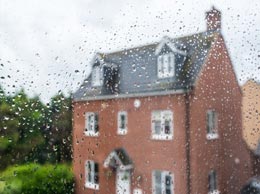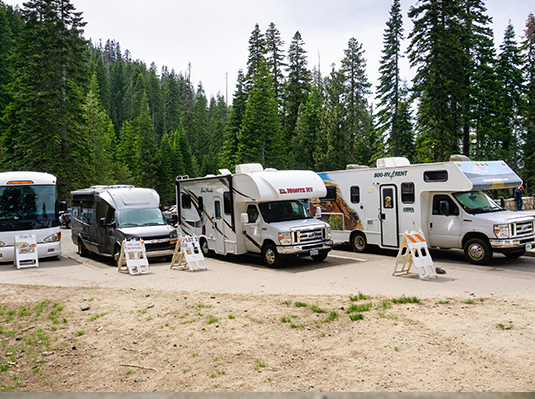
Today’s Manufactured Home market ranges from budget-friendly starter homes to deluxe, even two story, homes with features that make site-built homes pale in comparison. With new building standards and upgraded features, it’s common to see manufactured homes reach up to $300,000. This is why, no matter the cost of your manufactured home, it is important to insure it properly.
What's the difference between a manufactured home policy and a home policy?
The main difference between a manufactured home and a traditional home is the construction – how the homes are built. The construction of these homes is therefore the biggest difference between the required insurance policies you need to properly protect these homes. A standard home is one that’s built on-site. A plot of land where builders bring materials to create a house from the ground up. A manufactured home, or mobile home for those built pre-1976, is a house that’s built off-site at a facility and then transported to the location it will be inhabited.
The majority of manufactured homes have non-continuous foundations, meaning there is no full concrete slab underneath. You will often find that newer construction homes have concrete runners poured underneath and homes placed more than a few years ago will be leveled on concrete blocks. Transportation and installation challenges often prevent a home being placed on a full solid foundation. Because of this, many homes will have an approximate 3–4-foot crawlspace under the bottom floor. While this space provides easy access for home repair, the increased height and lack of a solid foundation increase the risk of damage due to windstorms, tornadoes, hurricanes, floods, and freezing. Due to this increased risk, standard homeowner’s insurance policies do not allow for manufactured homes. However, this created a specialized market for homeowner’s insurance for manufactured homes.
Many carriers who offer manufactured home coverage have developed their insurance programs to the changing needs and risks for the homeowner. This includes offering Replacement Cost Coverage, Extended Replacement Cost Coverage, as well as a multitude of optional endorsements that provide coverage for hobby farming, livestock, and other structures on the property. While both traditional home insurance and manufactured home insurance policies provide coverage for your house, your personal contents, and your liability – the differing construction process requires manufactured homes to have their own specific type of policy. Like traditional homes, mortgage companies will also require the purchase of manufactured home insurance if you have a mortgage on your house. Just like selecting the proper home insurance, you want to make sure your coverage fits your needs, and your deductibles are not too high. Common rating factors still apply such as location, age of home, age of roof, and home size. Make sure you discuss with your agent that you’ve purchased the correct type of home insurance policy for your home.
How is coverage calculated for a manufactured home?
Having the correct type of home insurance policy is certainly Step 1. Step 2 is selecting the proper coverage and coverage amounts. To determine the proper amount of insurance coverage needed for your home itself, the Dwelling Coverage, most carriers use a Replacement Cost Estimator. A Replacement Cost Estimator is a built-in calculator the insurance companies use to assess how much your house will cost to rebuild if it was totally destroyed. Factors the estimator considers include the age of home, age of roof, square footage, number and quality of bathrooms, quality of kitchen, and several more. The replacement cost estimate is not factoring in the loan amount, market value, or land value, as those are independent from the rebuild cost. While a traditional home may have a rebuild cost between $150-$300/sqft, a manufactured home is closer to $50-$125/sqft (amounts vary by state).
After you’ve confirmed with your agent that your rebuild cost is correct, you can select the proper amount of contents coverage you need for all of your personal belongings in/at your home. This coverage amount usually starts at 50% of your Dwelling Coverage, but you’ll have the flexibility to increase it higher if needed. Having the correct type of insurance policy and coverage amounts for your manufactured home are incredibly important to make sure you’re properly protected and have the peace of mind you deserve.
My insurance coverage doesn’t match my purchase price or my loan amount, is that ok?
It is very common for the Replacement Cost of your home to differ from your purchase price or loan amount. Both of those figures will factor in the market value of your land and/or depreciation for your home. In many cases with homes on a large amount of acreage, the Replacement Cost of your home will be lower than your purchase price and your loan amount. Bearing in mind that homeowners insurance covers physical damage to the structures on your property, not the land it sits on or the market it’s located in. While your personal liability is covered throughout the property, dwelling coverage is simply self-defined as coverage for your dwelling.
In summary, 22 million Americans live in manufactured homes, and that number is steadily growing with the increased cost of building materials, development of rural land, and more accessible lending programs providing the opportunity of homeownership. The United States has 129 Manufacturing Plants for these homes that produced 95,000 new builds in 2019 alone! As with any large investment, it is extremely important to make sure that not only your home is covered, but appropriate protection has been afforded to your family, your belongings, and the rest of your property.
Sources


